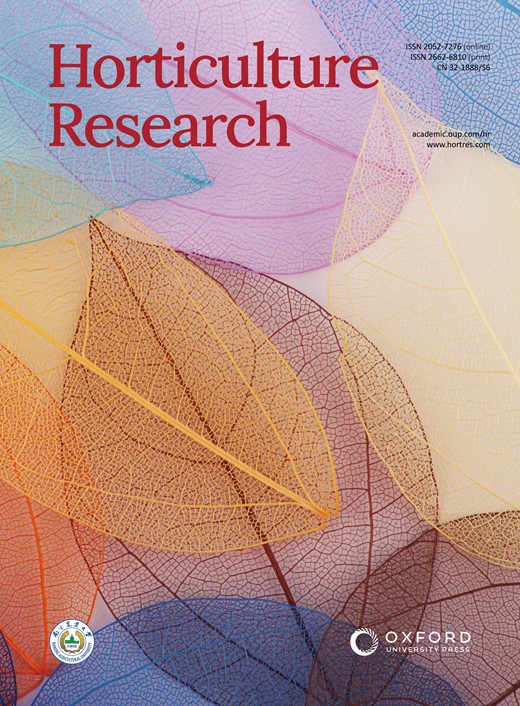Co-silencing of PhENO1 and PhPPT alters anthocyanin production by reducing phosphoenolpyruvate supply in petunia flower
IF 8.7
1区 农林科学
Q1 Agricultural and Biological Sciences
引用次数: 0
Abstract
The shikimate pathway is crucial for the production of aromatic amino acids and various secondary plant products, including anthocyanins. Phosphoenolpyruvate (PEP) is an important source for shikimate production. The pre-chorismate part of the shikimate pathway is confined to plastids. There are three sources of PEP in plastids. PEP can be imported into the plastids from cytoplasm via the PEP/phosphate translocator (PPT), and it can also be generated in plastids via enolase (ENO) and pyruvate orthophosphate dikinase (PPDK) catalysis. A large number of anthocyanins are synthesized in the flowers of most ornamental plants in the coloring stage. However, the source of PEP, the precursor of anthocyanin synthesis, is still unknown. Herein, Petunia hybrida PhENO1, PhPPT and PhPPDK genes were identified and their subcellular localization and expression patterns were analyzed. Silencing PhENO1, PhPPT and PhPPDK alone and co-silencing of PhENO1 and PhPPDK or PhPPT and PhPPDK did not exhibit any visible phenotypic change compared with the control, while co-silencing of PhENO1 and PhPPT resulted in the flower color change from purple to light purple. The content of PEP, shikimate, flavonoids, anthocyanins and aromatic amino acids were all significantly decreased in PhENO1 and PhPPT co-silenced plants. Co-silencing PhENO1 and PhPPT did not affect the expression level of key genes in anthocyanin synthesis and shikimate pathways. Furthermore, co-silencing of PhENO1, PhPPT and PhPPDK resulted in a phenotype similar to the co-silencing of PhENO1 and PhPPT. Altogether, our study suggested that PEP used for anthocyanin synthesis is mainly provided by PhENO1 and PhPPT, rather than PhPPDK.求助全文
约1分钟内获得全文
求助全文
来源期刊

Horticulture Research
Biochemistry, Genetics and Molecular Biology-Biochemistry
CiteScore
11.20
自引率
6.90%
发文量
367
审稿时长
20 weeks
期刊介绍:
Horticulture Research, an open access journal affiliated with Nanjing Agricultural University, has achieved the prestigious ranking of number one in the Horticulture category of the Journal Citation Reports ™ from Clarivate, 2022. As a leading publication in the field, the journal is dedicated to disseminating original research articles, comprehensive reviews, insightful perspectives, thought-provoking comments, and valuable correspondence articles and letters to the editor. Its scope encompasses all vital aspects of horticultural plants and disciplines, such as biotechnology, breeding, cellular and molecular biology, evolution, genetics, inter-species interactions, physiology, and the origination and domestication of crops.
 求助内容:
求助内容: 应助结果提醒方式:
应助结果提醒方式:


